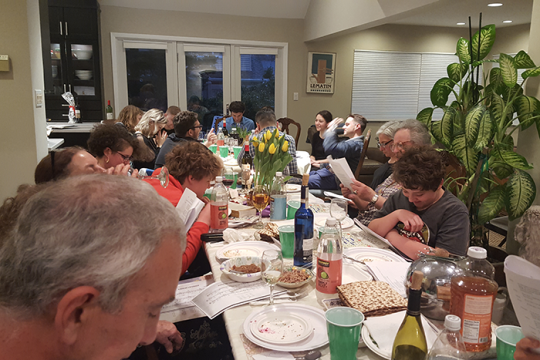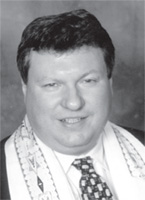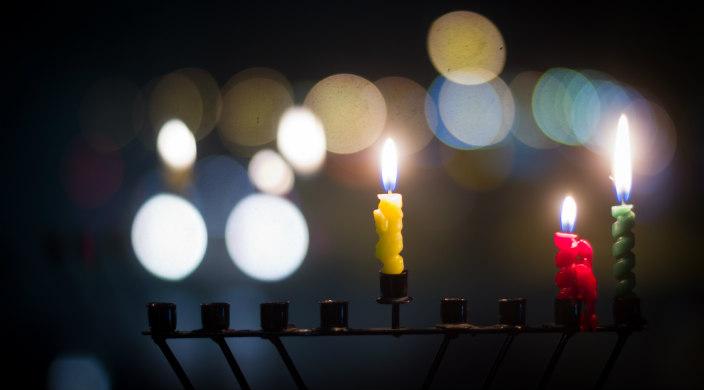
As we returned the sifrei Torah, the Torah scrolls, to their places after the honor of carrying them through the assembled congregation of 6,000 Reform Jews this past Shabbat morning, one of the other participants gave voice to something that I had already been feeling: “Now that’s an honor I never want to earn again,” she said.
I was astonishingly touched to be asked. The Torah bearers at the Shabbat morning service of the Union for Reform Judaism Biennial convention were from the Virgin Islands, Houston, and Northern California. We were chosen so we could feel the symbolic support of a vast movement, the care and concern of a continent of congregations. It lifted us up, and was a uniquely amazing experience.
I am glad to have participated, and worried that I did not follow the assigned route through the vast hallway, but sometimes you just have to go your own way.
But my partner Torah bearer was on to something. I felt famous... for being rained on? More to the point: if it took a trauma to earn that honor, indeed, I don’t want another one like that.
Now it’s Hanukkah. In the aftermath of trauma, and witness to new trials in other places as flames return once again to California, I have a new understanding of both sides of a very old argument.
The Talmud is, perhaps, unique amongst the sacred scriptures of the world, sometimes more focused on the discussion than the decision, and, even when it eventually concludes, it usually preserves a record of the “losing” argument. In fact, in the search for truth, better to call it a “minority opinion” than a “losing” side. To us, after the fact, it seems like all sides were partners in a search for understanding.
Usually, I teach about the development of Hanukkah, the question of history and authenticity, the fact that the central story we share of the little jar of oil lasting for eight days does not appear until hundreds of years after the events themselves – artful myth-making using strands of truth from the past to solve a new problem. But that is a topic I have addressed many times before.
This year, another part of the interpretive history of this holiday speaks to me: the heated argument between the disciples of Hillel and the followers of Shammai over how to light the Hanukkah menorah.
Many of us know that almost always our tradition decided that Jewish practice follows the teaching of the house of Hillel. Although that’s still true in this case, I think the followers of Shammai made their best case ever.
Here is the issue: what we are (supposedly) remembering is the story of a supply of oil that started out fully lit and then, although it lasted much longer than expected, dwindled down over time. Reproducing that, then, wouldn’t you light all eight candles the first night, then seven, then six...? That’s a logical move for an act meant as a ritual reflection of an actual event.
That is the position of Beit Shammai, the followers of Shammai. Makes sense to me.
Hillel or his followers, however, had a creative response that I think was more in touch with the psychology and symbolism, and a reflection of the season, and the Festival of Lights. The candles, the house of Hillel said, are reflections not of the event, but of the miracle. Not the light, but the wonder and the awe about it. And besides, they say: we add to holiness, we do not take away from it.
I live in the Virgin Islands. But I am also watching the flames in California now. I know how to light a menorah, under normal circumstances. And this Hanukkah, I am glad our tradition preserved both opinions.
As we are still, a hundred days after Hurricanes Irma and Maria, without power on parts of our islands, but, slowly, watching it spread... as we long for light... it would be intolerable, it would be trauma all over again... to start out with a fully lit menorah, and then watch it dwindle. This year, for me, the concept of the spreading, the sharing, the growth of light speaks to me as never before.
So that interpretation – the idea of growing light that is so deeply embedded within us – speaks to me where I live.
But you know, these lights we light? They are, actually... flame.
We preserve minority opinions, partly, perhaps, because there may come a day when they will be needed. And sometimes, we just have to go our own way.
To my friends and colleagues in Santa Rosa and Los Angeles, I wonder if, for you, this year, Shammai might hit closer to home.
Think about the idea that every night, the flames diminish, the fire is less.
Just one year, maybe, but if I were in California, I might want to go all rogue on my menorah this year. I think for those in the midst of smoke and flame, Shammai’s practice of making the fire fade a little more each night... if I were there, this year, that might be a source of comfort for me.
We all carry the Torah, we all bear the tradition forward, dependent on and surrounded by the love and support of a caring community. We are given directions, but, ultimately, it is up to us to pick our path, and choose the direction we wish to go.
May it be a meaningful celebration for us all – filled with power and light, free from destruction and chaos. Happy Hanukkah!
Recovery continues in communities affected by the season’s hurricanes, including Texas, Florida, Puerto Rico, and the U.S. Virgin Islands. The best ways to help those in need in these regions is to donate to these organization providing relief in impacted areas: Jewish Federations of North America 2017 Hurricane Relief Fund and NECHAMA: A Jewish Response to Disaster.
Related Posts
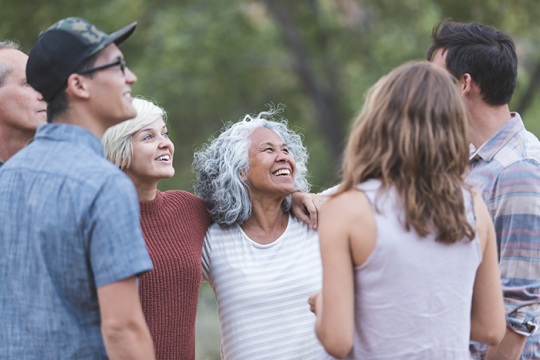
Harnessing the Power of our Mothers Around the Seder Table
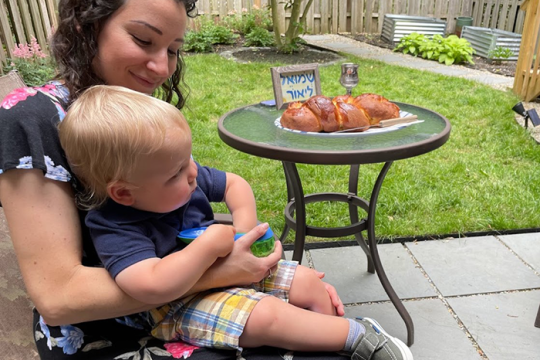
Melding Tradition and Innovation: Our Interfaith Toddler Naming Ceremony
